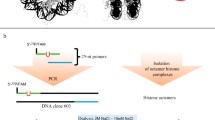Abstract
The X-ray repair cross-complementing group 1 (XRCC1) protein plays a central role in base excision repair (BER) interacting with and modulating activity of key BER proteins. To estimate the influence of XRCC1 on interactions of BER proteins poly(ADP-ribose) polymerase 1 (PARP1), apurinic/apyrimidinic endonuclease 1 (APE1), flap endonuclease 1 (FEN1), and DNA polymerase β (Pol β) with DNA intermediates, photoaffinity labeling using different photoreactive DNA was carried out in the presence or absence of XRCC1. XRCC1 competes with APE1, FEN1, and PARP1 for DNA binding, while Pol β increases the efficiency of XRCC1 modification. To study the interactions of XRCC1 with DNA and proteins at the initial stages of BER, DNA duplexes containing a photoreactive group in the template strand opposite the damage were designed. DNA duplexes with 8-oxoguanine or dihydrothymine opposite the photoreactive group were recognized and cleaved by specific DNA glycosylases (OGG1 or NTH1, correspondingly), although the rate of oxidized base excision in the photoreactive structures was lower than in normal substrates. XRCC1 does not display any specificity in recognition of DNA duplexes with damaged bases compared to regular DNA. A photoreactive group opposite a synthetic apurinic/apyrimidinic (AP) site (3-hydroxy-2-hydroxymethyltetrahydrofuran) weakly influences the incision efficiency of AP site analog by APE1. In the absence of magnesium ions, i.e. when incision of AP sites cannot occur, APE1 and XRCC1 compete for DNA binding when present together. However, in the presence of magnesium ions the level of XRCC1 modification increased upon APE1 addition, since APE1 creates nicked DNA duplex, which interacts with XRCC1 more efficiently.
Similar content being viewed by others
Abbreviations
- APE1:
-
human apurinic/apyrimidinic endonuclease 1
- AP site:
-
apurinic/apyrimidinic site
- BER:
-
base excision repair
- dRP:
-
deoxyribose phosphate residue
- F:
-
3-hydroxyl-2-hydroxymethyltetrahydrofuran
- FEN1:
-
human flap endonuclease 1
- NTH1:
-
human DNA glycosylase, homolog of E. coli endonuclease III
- OGG1:
-
human 8-oxoguanine DNA glycosylase
- 8-oxoG:
-
8-oxoguanine
- PARP1:
-
human poly(ADP-ribose) polymerase 1
- Pol β:
-
rat DNA polymerase β
- XRCC1:
-
human X-ray repair cross-complementing group 1 protein
References
Kubota, Y., Nash, R. A., Klungland, A., Schar, P., Barnes, D. E., and Lindahl, T. (1996) EMBO J., 15, 6662–6670.
Marsin, S., Vidal, A. E., Sossou, M., Menissier-de Murcia, J., Le Page, F., Boiteux, S., de Murcia, G., and Radicella, J. P. (2003) J. Biol. Chem., 278, 44068–44074.
Campalans, A., Marsin, S., Nakabeppu, Y., O’connor, T. R., Boiteux, S., and Radicella, J. P. (2005) DNA Repair, 4, 826–835.
Vidal, A. E., Boiteux, S., Hickson, I. D., and Radicella, J. P. (2001) EMBO J., 2, 6530–6539.
Caldecott, K. W., Aoufouchi, S., Johnson, P., and Shall, S. (1996) Nucleic Acids Res., 24, 4387–4394.
Masson, M., Niedergang, C., Schreiber, V., Muller, S., Menissier-de Murcia, J., and de Murcia, G. (1998) Mol. Cell. Biol., 18, 3563–3571.
Schreiber, V., Ame, J. C., Dolle, P., Schultz, I., Rinaldi, B., Fraulob, V., Menissier-de Murcia, J., and de Murcia, G. (2002) J. Biol. Chem., 277, 23028–23036.
Petermann, E., Keil, C., and Oei, S. L. (2006) DNA Repair, 5, 544–555.
Caldecott, K. W., McKeown, C. K., Tucker, J. D., Ljungquist, S., and Thompson, L. H. (1994) Mol. Cell. Biol., 14, 68–76.
Caldecott, K. W., Tucker, J. D., Stanker, L. H., and Thompson, L. H. (1995) Nucleic Acids Res., 23, 4836–4843.
Parsons, J. L., Dianova, I. I., Allinson, S. L., and Dianov, G. L. (2005) Biochemistry, 44, 10613–10619.
Wong, H. K., Kim, D., Hogue, B. A., McNeill, D. R., and Wilson, D. M., 3rd (2005) Biochemistry, 44, 14335–14343.
Marintchev, A., Mullen, M. A., Maciejewski, M. W., Pan, B., Gryk, M. R., and Mullen, G. P. (1999) Nat. Struct. Biol., 6, 884–893.
Mani, R. S., Karimi-Busheri, F., Fanta, M., Caldecott, K. W., Cass, C. E., and Weinfeld, M. (2004) Biochemistry, 43, 16505–16514.
Nazarkina, Zh. K., Petrousseva, I. O., Safronov, I. V., Lavrik, O. I., and Khodyreva, S. N. (2003) Biochemistry (Moscow), 68, 934–942.
Lebedeva, N. A., Khodyreva, S. N., Favre, A., and Lavrik, O. I. (2003) Biochem. Biophys. Res. Commun., 300, 182–187.
Sukhanova, M. V., Khodyreva, S. N., and Lavrik, O. I. (2004) Biochemistry (Moscow), 69, 558–568.
Drachkova, I. A., Petrousseva, I. O., Safronov, I. V., Zakharenko, A. L., Shishkin, G. V., Lavrik, O. I., and Khodyreva, S. N. (2001) Bioorg. Khim., 27, 179–204.
Audebert, M., Radicella, J. P., and Dizdaroglu, M. (2000) Nucleic Acids Res., 28, 2672–2678.
Dezhurov, S. V., Khodyreva, S. N., Plekhanova, E. S., and Lavrik, O. I. (2005) Bioconj. Chem., 16, 215–222.
Sambrook, J., Fritsch, E. F., and Maniatis, T. (1989) Molecular Cloning: A Laboratory Manual, 2nd Edn., Cold Spring Harbor Laboratory Press, New York.
Laemmli, U. K. (1970) Nature, 277, 680–685.
Caldecott, K. W. (2003) DNA Repair, 18, 955–969.
Bruner, S. D., Norman, D. P. G., and Verdine, G. L. (2000) Nature, 403, 859–866.
Zharkov, D. O., Rosenquist, T. A., Gerchman, S. E., and Grollman, A. P. (2000) J. Biol. Chem., 275, 28607–28617.
Nazarkina, Z. K., Khodyreva, S. N., Marsin, S., Lavrik, O. I., and Radicella, J. P. (2007) DNA Repair, 6, 254–264.
Liu, Y., Beard, W. A., Shock, D. D., Prasad, R., Hou, E. W., and Wilson, S. H. (2005) J. Biol. Chem., 280, 3665–3674.
Prasad, R., Beard, W. A., Strauss, P. R., and Wilson, S. H. (1998) J. Biol. Chem., 273, 15263–15270.
Bennet, R. A. O., Wilson, D. M. III, Wong, D., and Demple, B. (1997) Proc. Natl. Acad. Sci. USA, 94, 7166–7169.
Author information
Authors and Affiliations
Corresponding author
Additional information
Published in Russian in Biokhimiya, 2007, Vol. 72, No. 8, pp. 1078–1089.
Originally published in Biochemistry (Moscow) On-Line Papers in Press, as Manuscript BM07-120, July 15, 2007.
Rights and permissions
About this article
Cite this article
Nazarkina, Z.K., Khodyreva, S.N., Marsin, S. et al. Study of interaction of XRCC1 with DNA and proteins of base excision repair by photoaffinity labeling technique. Biochemistry Moscow 72, 878–886 (2007). https://doi.org/10.1134/S000629790708010X
Received:
Issue Date:
DOI: https://doi.org/10.1134/S000629790708010X



